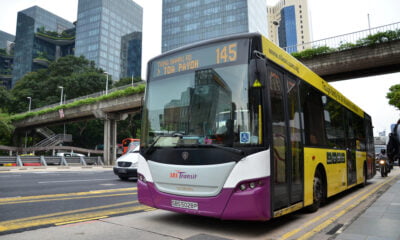

Lifestyle
An Ecotourist’s Guide To Visiting India With A Visa From The UK
India is becoming more focused on sustainability than ever. Fodors Travel Guide recently wrote about six villages in India that are highly focused on sustainable living.
If you live in the United Kingdom, you might be considering relocating to one of these parts of India to help facilitate the transition to sustainable living. However, before you can do this, you are going to need to get a visa first.
How Sustainable Tourists Can Get a Visa to Move to India
India’s newfound commitment to green living is one of its charms. Of course, there are other benefits beyond the country’s focus on environmentalism. With breathtaking architecture, world-famous food, and magnificent wildlife to discover, India is at the top of many travel bucket lists for conventional travelers and eco-tourists alike. Over 10 million foreign tourists visited the country in 2017, marking a 15.6% growth from the previous year.
In addition to green living plans, India’s wondrous diversity attracts many eco-tourists. There are countless places to visit, from bustling cities and luxurious coastal retreats to expansive nature parks and snow-dusted peaks. But on top of planning the details of your destination, it’s vital that you start thinking about applying for an Indian visa roughly two months before your trip as an eco-tourist.
It’s important to remember that visas are valid for 120 days after issue, not from the day you receive it or the date you travel to India. Though you don’t want to apply at the last minute, applying too early could potentially cut into the time you plan to spend abroad. This isn’t something you want to deal with as an eco-tourist.
Like the majority of people around the world, British citizens must be able to provide a valid pre-arranged visa upon entry to India. The application can often be confusing and dependent on many factors, including the nature of your visit and the duration of your stay.
It’s important to note that everything is issued by the Indian High Commission, and whatever they say goes. Unfortunately, this means there’s a chance that you may not be granted a visa that is valid for as long as you would like.
To make the process as straightforward as possible, we’ve outlined everything you need to know:
Picking the visa you need
When planning your trip, you must declare whether you’re visiting for business purposes or as a tourist. If your trip is work-related, it’s worthwhile applying for a business visa. For British passport holders, this could entail anything from importing and exporting products to establishing a trading company in India. This ensures you have the relevant permissions to buy, sell, or make any business-related decisions, and it is legally sound. However, if your visit to the country is strictly personal, you should apply as a tourist. If you are a regular eco-tourist, you will emphasize that you are a visitor on your visa. If you work for a green company and are being relocated, you are going to get a work visa.
Applying for an e-visa
E-visas are ideal for eco-tourists taking short trips to India for Brits. They are delivered and verified electronically by passport control officers. Both business and tourist versions of an e-visa give you the chance to enter India twice during a calendar year, staying up to 60 days each time. These cost roughly £78 each, plus any service charges, and applications are processed in around 36 hours.
You can apply online with basic personal information and some details of your trip, such as the address of where you’re staying. You’ll also need to upload a 5x5cm passport-style photo and a scan of your passport. Once approved, an email will be sent by the Indian Government as confirmation, along with a copy of your visa. Even though the document will be accessed electronically, it’s recommended you print a copy to show airline and immigration officials if required.
If you have Pakistani heritage—such as if your parents or grandparents were born in Pakistan—you are not eligible to apply for an e-visa, regardless of your current nationality. The processing time is also seven to eight weeks longer in these cases, which you should bear in mind when planning your trip.
Applying for a traditional visa
For visits longer than 60 days, it’s best to apply for a regular tourist visa, which can last up to five years. This is something that people in the green technology industry must do if they are relocating to India indefinitely. These visas are dependent on various factors, including how many times you’ve visited India in the past, and can be applied for physically or online. Applications for business visas require additional documents, including an invitation letter from an Indian company highlighting the reason for your visit. A supporting letter from your UK company should be submitted alongside this.
Important travel information
A visa is only be accepted at certain Indian airports and seaports so you need to make sure you’re entering at an approved location, and book domestic flights to other destinations if you need to. Your passport needs to be valid for at least six months from the day you arrive in India and should have two blank pages which can be stamped by immigration officials. Every person traveling must hold the correct, and valid, documents, including those of children and babies.
Taking a Green Trip to India Doesn’t Have to Be Overwhelming
There are a lot of great places in India for green tourists to visit. It is well worth the effort. Fortunately, getting a visa as an eco-tourist doesn’t have to be too difficult.


 Environment10 months ago
Environment10 months agoAre Polymer Banknotes: an Eco-Friendly Trend or a Groundswell?

 Environment11 months ago
Environment11 months agoEco-Friendly Home Improvements: Top 7 Upgrades for 2025

 Features9 months ago
Features9 months agoEco-Friendly Cryptocurrencies: Sustainable Investment Choices

 Features10 months ago
Features10 months agoEco-Friendly Crypto Traders Must Find the Right Exchange





























